The best currants for Siberia: top varieties
Despite the fact that Siberia cannot be called an ideal place for growing currants, many gardeners still decide to plant the berry on their site. First of all, summer residents choose a variety. It must be frost-resistant and easy to care for. In the article we will tell you what currants are called for Siberia - sweet and large, resistant to disease, and what varieties to pay attention to.
The best large and sweet currant varieties for Siberia
Some gardeners claim that black berries are best suited for fresh consumption, and red and white ones for canning.
When choosing, pay attention to the ripening period, immunity to diseases and pests. Indicators such as self-fertility, frost resistance, and productivity are also important.
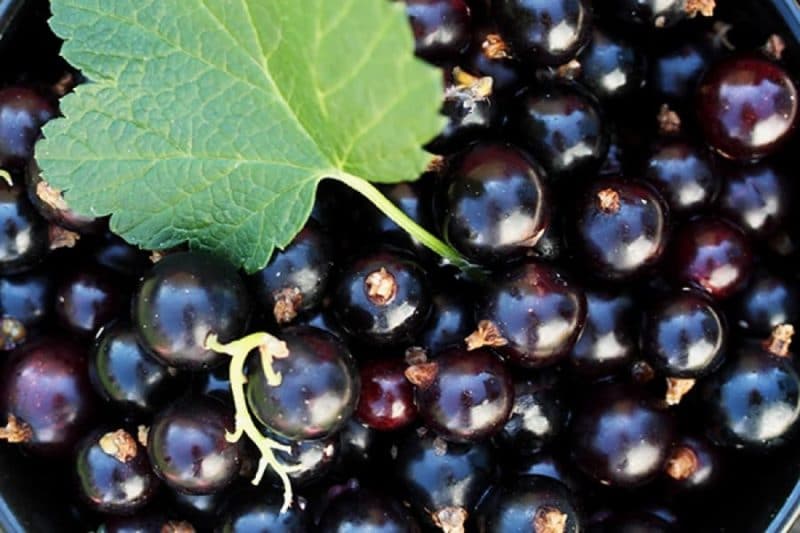
Black
Black currant It is distinguished by large berries, rich aroma and attractive presentation.
Among the varieties for Siberia, summer residents distinguish Yadrenaya, Bagira and Zagadka.
Vigorous
The variety is recommended for cultivation in the West Siberian region. The purpose is universal - currants are consumed fresh, used for making compote, preserves, jam. The ripening period is medium-late, the berries ripen smoothly and do not fall off.
Among the advantages of the variety is the attractive appearance of the fruit. The average weight of the berry is 3.2 g, oval shape, deep black color. The pulp is tender, the taste is sweet and sour. Yadrenaya is rarely affected by powdery mildew and is frost-resistant.
Bagheera
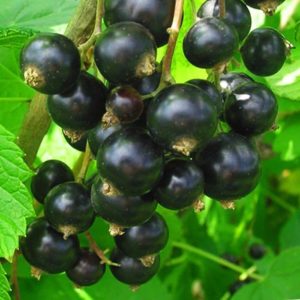
Bagheera is the most versatile, mid-late variety of black currant. It is characterized by frost resistance and productivity.
During the season, one bush produces about 4-5 kg of ripe and tasty berries. The weight of the fruit is about 2.5 g, the shape is round-oval, the color is blue-black.
The harvest produces vitamin-rich and rich drinks and desserts.
Among the features, gardeners note the appearance of the bush - the plant is spreading, the leaves are large and dense. To obtain a rich harvest, it is important to maintain the distance between plantings.
The Bagheera variety is resistant to anthracnose and powdery mildew. This is an ideal black currant for Western Siberia and the Urals.
Mystery
Among the characteristics of the black currant Riddle, the average ripening period and resistance to external conditions are noted.
Per season from the bush collect about 3 kg of berries. The weight of the fruit varies from 1 to 1.5 g. The shape is round, the skin is dense and shiny, the color is dark blue. The harvest is used to make drinks or consumed fresh.
Red
Red currants decorate the garden plot with their appearance and are great for preparing vitamin fruit drinks. Many Siberian summer residents grow the varieties Early Sweet, Asya and Natali on their plot.
Early sweet
Early sweet is grown in the East Siberian region - the plant tolerates weather changes and has stable yields. The bushes are medium-sized, with a spreading crown, need in timely care. During the season, up to 3 kg of berries are removed from the plant.
The fruits are small, weighing about 1 g. The color is bright red, the skin is thin, slightly translucent. The variety is self-fertile and resistant to fungal diseases. The crop is used for home preservation and fresh consumption. Some gardeners grow Siberian currants for sale.
Asya
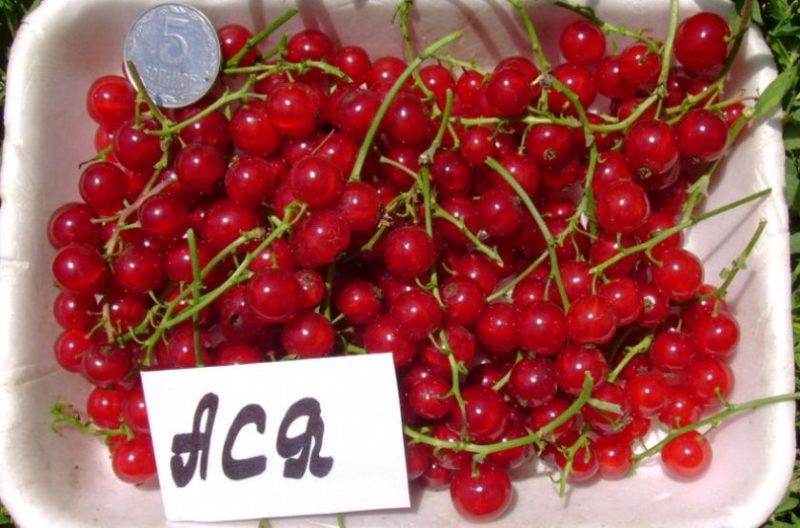
Medium-sized bushes are distinguished by a small fruit cluster, which collects from 10 to 15 berries. The currant is small, the weight of the fruit is about 0.6 g. The skin is dense, rich red in color. The taste is refreshing, sweet and sour.
Among the advantages of the Asya variety are resistance to drought and frost, immunity to diseases and pests. The berry is universal in use.
Natalie
The large-fruited and productive variety Natalie gives gardeners up to 10 kg of berries per bush per season. The plant is distinguished by thick and straight shoots and wide leaves. The berries grow in clusters of 6-10 pieces.
Among the advantages of the variety are resistance to gall aphids and frost resistance. Red currant Natalie is suitable for all types of processing.
White and pink
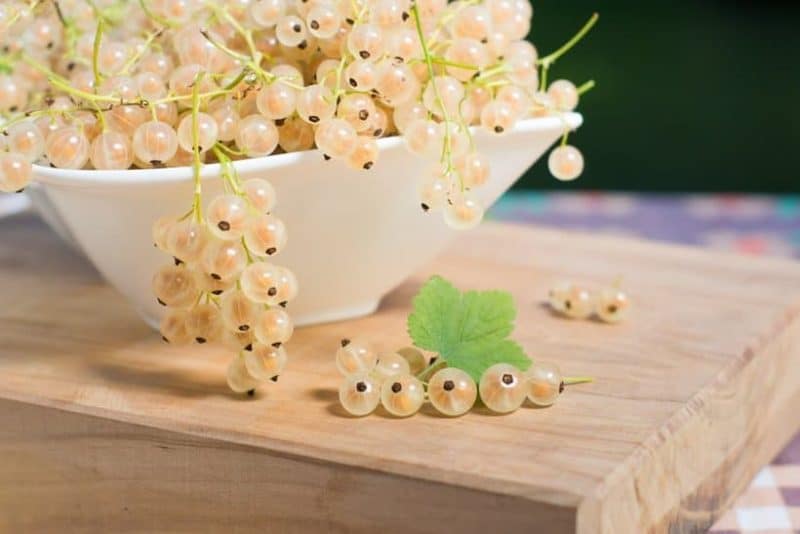
Varieties of white and pink currants are becoming increasingly popular among Siberian gardeners. The reasons for this are high productivity and unpretentiousness. For example, many grow White Fairy, White Potapenko and Rossoshanskaya currants.
White fairy
Mid-season White Fairy currant does not cause any difficulties when planting; it produces 5-8 kg of harvest annually. The berries are small, average weight - 0.4 g. The skin is thin, almost transparent. The pulp is tender, the taste is refreshing.
The characteristics of the variety include resistance to severe frosts and aphids. The purpose of the berries is universal - they are used to prepare desserts, drinks, and baked goods.
Attention! Summer residents advise buying currant seedlings in trusted places. The plant should be wrapped in damp cloth. Damage, rot or stains on the bark are not acceptable.
Belaya Potapenko
The variety is ideal for cultivation in the West Siberian region. The berries are round, medium in size, yellow-cream in color. After ripening, they do not crumble and retain their taste and aroma.
Among the advantages of the variety are:
- frost resistance;
- unpretentiousness in cultivation;
- attractive appearance;
- versatility of use.
Rossoshanskaya
Rossoshanskaya is a productive variety of pink currant. The fruits are large, the pulp is juicy and aromatic. The ripening period is medium, the variety is frost-resistant. The bush produces up to 6 kg of harvest per year.
Rossoshanskaya is resistant to powdery mildew and anthracnose. Does not require special skills to care for. After ripening, the fruits do not fall off.
Varieties for Siberia, resistant to diseases and pests
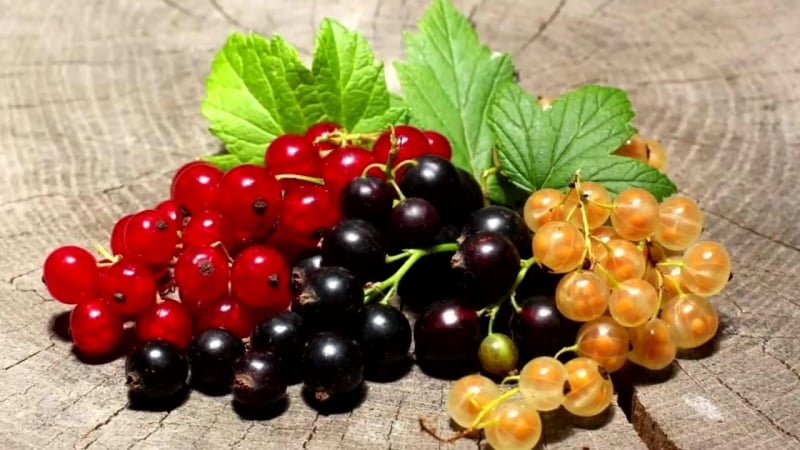
Most often, currants in Siberia are affected by anthracnose, a fungal disease that appears due to improper care, contaminated soil, and lack of preventive measures. Among the diseases, summer residents identify powdery mildew, mildew, and rust.
Plants and pests affected by:
- aphids – small white insects with wings;
- sawflies - bright orange or blue caterpillars;
- moths are small gray butterflies.
Dobrynya and Izyumnaya currants are immune to diseases and insect pests. The Dobrynya variety is unpretentious and large-fruited - the weight of one berry reaches 3 g. The skin is dense, the berries are resistant to cracking. The taste is pleasant, sweetish.
Currant Raisin gives summer residents black matte berries, sweet, with juicy pulp. The shape is round, the weight of the fruit is about 2 g. The variety is universal in use and is suitable for growing for sale. Izyumnaya is also distinguished by good transportability and long shelf life.
Description of the Siberian currant variety
Siberian currant is resistant to winter and spring frosts, withstands winds and other adverse weather conditions.
Medium-sized bushes, compact crown. The diameter of the fruit reaches 2.5 mm, weight – up to 5 g. The shape is round, the color is black and blue, the skin is dense and matte.Siberian has a rich aroma and a sweet taste. Currants rarely get sick; after ripening, the berries retain their taste and commercial qualities.
Important! To get a rich harvest of Siberian, it is recommended to plant it along the fence. Before planting, the soil is cleaned of grass residues and fertilize urea.
Conclusion
To grow a good crop of currants in Siberia, it is important to pay attention to the choice of variety. The berry should be frost-resistant, sweet, with a thick skin.
Experienced gardeners recommend paying attention to the Rossoshanskaya, Natali, and Zagadka varieties. They will not cause any trouble in growing and will delight you with a tasty harvest. It is important to take into account the ripening period, self-fertility, immunity to diseases and pests.